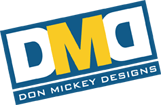|
There are several factors to consider when choosing a paper on which to print: paper quality, price, and availability. When choosing a paper where sustainability and environmental impacts are concerned, one must also consider type of content, amount of recycled content, and production methods.
Recycled paper can contain both pre-consumer pulp substitutes and post-consumer fibers. To meet EPA standards, most recycled papers today include at least 30% post-consumer content (10% for coated papers). In considering production methods, a key concern in relation to environmental impact is chlorine usage in the de-inking and coloring process. When chlorine bonds chemically with carbon-based compounds, such as lignins found in paper, it produces dioxins and other toxic pollutants. In response to this issue, many mills now use alternative methods for this process.
TREE-FREE PAPERThe most appealing readily-available paper in terms of sustainability and environmental impact is Kenaf, produced by Vision Paper Company. In addition to it's obvious tree-free selling point, Vision Paper's Kenaf product is completely chlorine-free. Kenaf papers are available in a variety of weights and finishes, as well as a Kenaf/post consumer recycled blend.POST CONSUMER RECYCLEDHigh post consumer recycled content papers are all uncoated, and generally have a fibrous texture. Those that are 100% recycled are usually a blend of a high content of pre-consumer fibers and a lower percentage of post-consumer content. Choices include the French Speckletone, Genesis, and Evergreen 100PC.UNCOATED OFFSET AND OPAQUEMost uncoated stocks contain a minimum of 30% recycled material, usually all of which is post-consumer to meet EPA requirements.COATEDDon Mickey Designs' house coated paper contains a minimum of 20% post-consumer recycled material. All of the coated papers we offer have the EPA required minimum 10% recycled content. |
 |
 |


